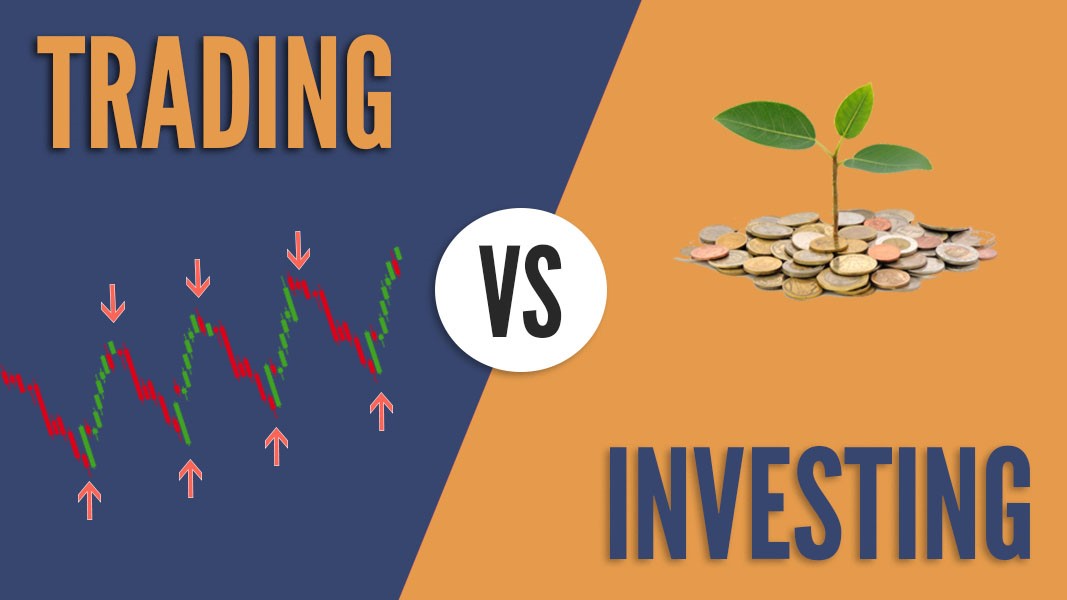While these two types of trading might seem to fall on opposite ends of the spectrum, there is actually a lot of gray area in between. Short-term trades are anything that you make within one week to hopefully one month or like 5 years. Long-term trades are anything that you make longer than 5 years. This article will discuss both in detail and give examples of each type with the hopes that you can better understand where your own trading falls on the spectrum.
Short-term trading
Short-term trading is a term used by investors to describe the act of buying and selling stocks within short time portfolios. In essence, short-term trading pertains to the selling and purchase of securities within one week or several days. Short term is a way to make money from a stock that can help you reach your targets in a more timely manner. Short term trading gives you a chance to react quickly on information that comes out about the company or stock.
Short-term trading is the act of generating funds by trading securities on a short-term basis over periods that are typically less than a week in length. Best share to buy for short term via either the bid price on the cash market, or the ask price on the derivative market, depending on which is more desirable at that time. Short term traders exhibit a high variation in returns as they only stay in positions for a short period of time before adjusting their portfolios and moving onto other opportunities.
Pros of short-term trading
1. Faster means of making money
Short-term usually means 5 years or less. This kind of timeframe is suitable for both novice traders who want to build their business and experienced traders who don’t have enough capital to reach their investment goals. Short-term can be a risky area but if you know how to do it, you can earn profits quicker than with long-term trading.
2. Short-term risk
In short-term trading, the risk of loss is greater than the potential reward. This is an intricate part of short-term trading that many beginners and even seasoned traders fail to understand. The key to success, long-term or short-term, is manage the risk of losing money.
Since you’re staying in positions for a shorter period of time, the price movement tends to be more volatile and unpredictable. In order to manage these risks, traders will make use of various strategies such as utilizing stop losses, trading smaller size positions and by focusing on smaller cryptocurrencies which are more stable.
Cons of short-term trading
1. Stress
Stress is a major factor in the short-term trading game especially when we’re talking about losing trades. It’s like there’s this part of your brain that begins to calculate all the risk and investment you have put into a trade and wondering if it was all worth it. Sure, all investing comes with some level of stress but short-term trading even more.
2. Time-consuming
One of the fundamental problems with short-term trading is that you need to spend a lot of time researching the market and then analysing the potential of each individual trade. This process can take up a lot of your time and you need to be aware that by doing this you’re effectively bleeding your profits over the course of both gaining and then subsequently losing trades.
Long-term trading
Stocks to invest for long term is characterized by a reduction in the number of trades executed, a higher average trade size, and fewer market entries and exits. Long-term trading entails waiting for market situations that offer the opportunity to take substantial portions of the underlying instrument or asset’s value.
The longer you hold onto an investment, the larger your potential profit may be. You can achieve this by investing in undervalued stocks with potential for large growth. Patience is also critical for successful long-term trading. As such, low margin rates, implied volatility, as well as stop loss orders usually associated with short-term trading are options that should be avoided.
Pros of Long-term trading
1. Less stressful
Trading long-term is less stressful than day trading. The only time you will find yourself at the computer watching charts countdown is when the market is open. Day trading, on the other hand, means you are checking on your charts several times a day. While there’s nothing wrong with this activity, it does make for a constant stream of emotions. If a stock goes against you, then it can be difficult to make an exit without emotional involvement.
2. Time-saving
Time-saving is the most obvious pro of long-term trading for both institutional and private traders. Short-term trading is inefficient and exhausting, as it does not allow traders to take advantage of the majority of opportunities in a certain time frame.
3. Compounding
One of the greatest benefits of long-term trading is compounding. That is, the interest gained reinvested and added back to the investment. The early years of compounding can make a big difference in your account size!
Cons of Long-term trading
Chance of missing out
The chances of missing out on a big market move will always be higher with a long-term trade. Many times we have spotted moves that created 300%+ jumps in days, but we missed the trade because we weren’t able to gain maximum exposure all at once.




